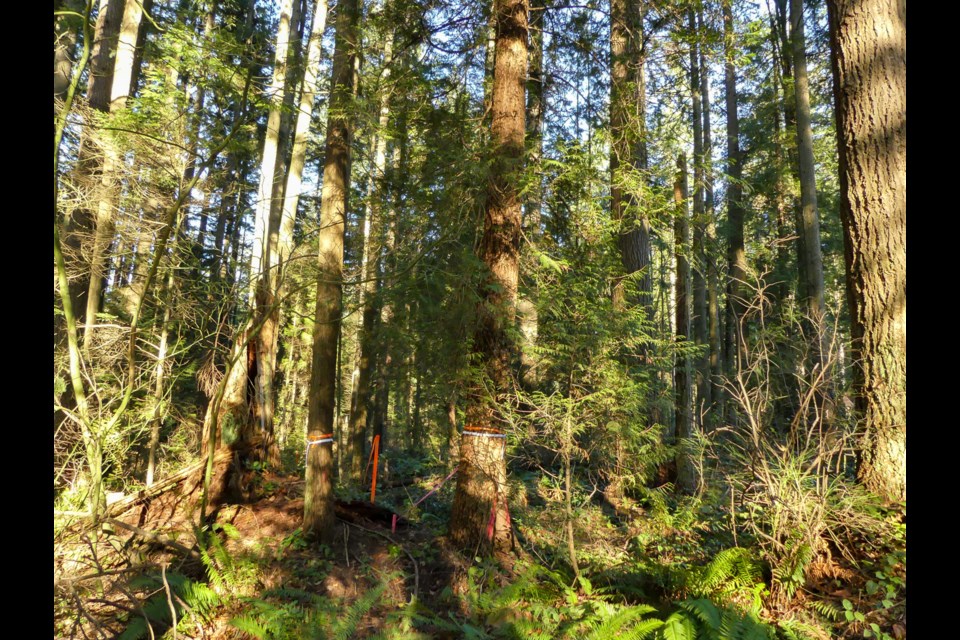-
The Editor:
Re: Mundy Park trails move to update Coquitlam works yard (Nov. 30, 2021)
Members of the Burke Mountain Naturalists Society (burkemountainnaturalists.ca), are very concerned about the current plan for the Austin Works Yard Renewal project and expansion in Mundy Park.
Coquitlam residents and park users may be unaware of the extent of the tree and habitat losses about to be incurred. Although there is signage about the project at the trailheads, it does not clearly state how mature trees, watercourses and important habitat areas will be impacted.
Besides the removal of all trees and understory plant species within the existing Austin Works Yard and proposed expansion area, the Mundy Park trail realignment plan will result in additional mature trees to be removed from the Urban Forest Park Dedication area of Mundy Park. Bylaw 2699 from 1993 states that the urban forest of Mundy Park is “dedicated for the public’s use and enjoyment and to the management, conservation and enhancement of native flora and fauna."
The removal of trees and habitat will amount to a loss of about 3.5 acres or a forested area about the size of two soccer fields. This area has many mature Douglas fir, western red-cedar and western hemlock trees along with a rich understory of salal, Oregon grape, huckleberry, sword ferns and other native plants essential for local wildlife. On a recent walk, our group observed many songbirds feeding in the dense understory, as well as evidence of sapsucker holes and nest cavities in the trees.
The city’s proposed plan for any trees removed to be replaced with native species will not replace or compensate for the loss of this urban forest with mature trees and intact ecosystems. It will take at least 40 years to regrow a mature urban forest and its associated habitats, if one can be reproduced.
When one part of an interconnected forest is removed, it weakens the forest around it. Trees that were once sheltered and that shared nutrient and water resources through their underground connections become exposed to wind, heat, drought, flooding, disease and invasive plants. The loss of such mature forested land is happening all too often on city lands in our area, including at 3038 Guildford Way and in the adjacent area along Pipeline Road.
The cumulative effects of such losses are of significant concern.
In view of climate change and extreme weather conditions, preservation of our remaining forests is extremely important. We need trees for enabling carbon sequestration, cooling, absorbing heavy rainfall and maintaining a balanced ecosystem. Our at-risk bird and wildlife populations rely upon it. We humans rely on it for our own physical and mental health.
We understand that the reason for the expansion is due to the ever-expanding population of Coquitlam and the need for more maintenance and administrative facilities.
However, we believe that the protection and health of the forest and understory should factor into any present and future plans.
Instead of this renewal project, we wonder if the city could use an alternate space that does not have mature trees on it, which could also be available for future needs. In fact, works yards in both north and south Coquitlam might offer a more efficient use of fuel and labour and reduce our carbon footprint more effectively.
- Lori Austin, Catherine Ho, Edie Kernighan, Elizabeth Thunstrom and John Saremba
Education and Conservation Committee
Burke Mountain Naturalists






